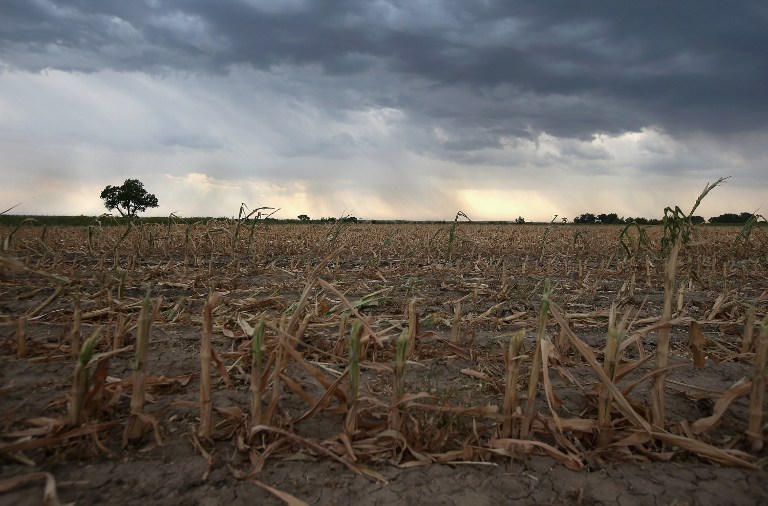SUMMARY
This is AI generated summarization, which may have errors. For context, always refer to the full article.

WASHINGTON DC, USA – One in 10 people around the world will live in a place where climate change is damaging at least two major sectors such as crop yields, water, ecosystems or health, said an international study on Monday, July 1.
These so-called climate “hotspots” will be most widespread in the southern Amazon, with “severe changes” in water availability, yields and ecosystems, said the study in the Proceedings of the National Academy of Sciences, a US journal.
The second largest hotspot region is southern Europe, where water shortages and crop failures would lead to hardships for the population, said the study led by Franziska Piontek of Germany’s Potsdam Institute for Climate Impact Research.
“Overlapping impacts of climate change in different sectors have the potential to interact and thus multiply pressure on the livelihoods of people in the affected regions,” said Piontek.
The study included climate impact researchers from Japan, the United States, China, Europe and beyond, and used mathematical modeling programs to project how global warming will change the livelihoods of people around the planet.
Different levels of warming were analyzed, with multi-sector overlap beginning to appear “robustly” at an average warming worldwide of 3ºC above the 1980-2010 average, it said.
When that figure was raised to 4ºC above the 1980-2010 average, 11% of the world’s population was “subject to severe impacts in at least two of the four impact sectors,” it said.
Other hotspots included tropical regions of Central America and Africa, as well as the Ethiopian highlands because of the overlapping pressures of malarial spread, suffering crops and ecosystem changes.
Northern regions of south Asia were also predicted to suffer because of crop woes combined with either ecosystem changes or water availability.
“What today is considered extreme could become the new normal,” said co-author Qiuhong Tang of the Chinese Academy of Sciences.
The analysis found no place on Earth where all four sectors would experience a severe change.
Much of Africa, which might be considered a vulnerable part of the planet, did not appear as a hotspot under the model methods used. However, the case might be different if droughts and floods were included as metrics, the authors said.
Researchers said the data should help nations plan for significant changes in the decades ahead, either by speeding adaptation strategies or motivating decisions to curb climate change.
“It allows for a risk management perspective,” said co-author Alex Ruane of the NASA Goddard Institute for Space Studies.
“In the hotspot parts of Africa, for instance, even small temperature rises can lead to additional losses that many small farmers simply cannot afford.” – Rappler.com
Add a comment
How does this make you feel?
There are no comments yet. Add your comment to start the conversation.